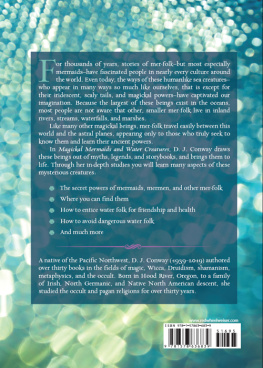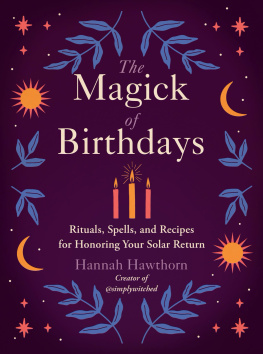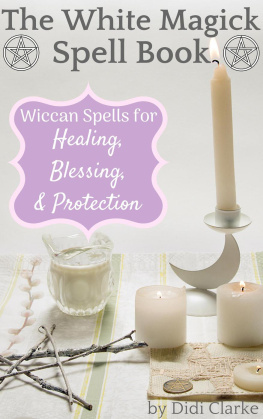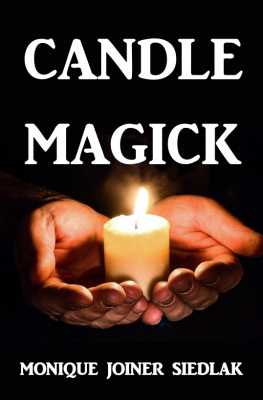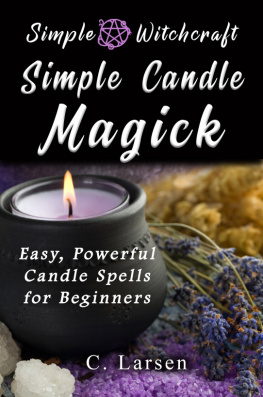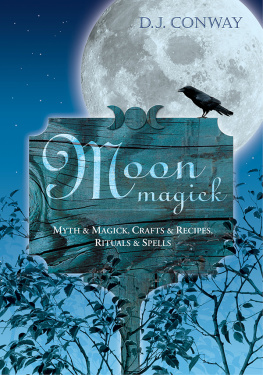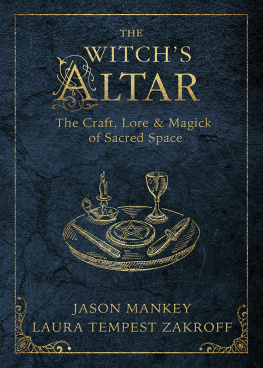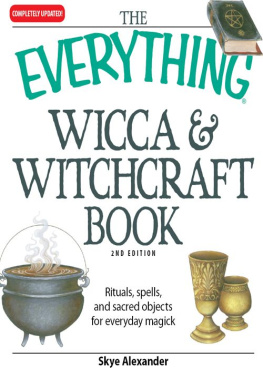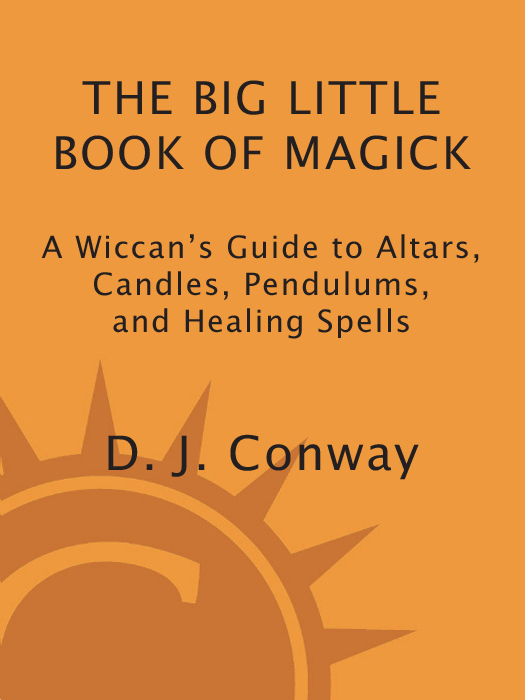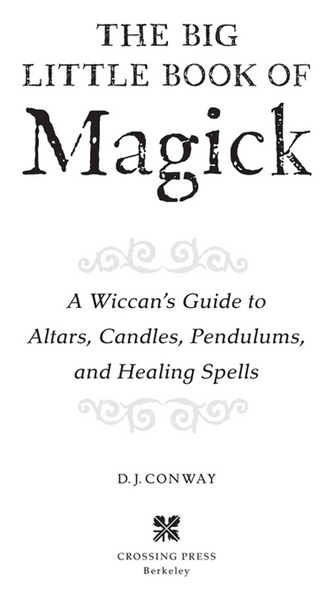 Praise for the
Praise for the Little Book of Magic
series:Whether you are a beginner or an experienced healer, within these pages you will find the key to expand your path of spiritual growth and awaken the magick within.
Bonnie Thompson, Crescent Moon Goddess
There is, quite simply, no better book on the basics of healing magick anywhere for any price.
Devon Cathlin, Publisher of Rebel Planet magazine
A fascinating little book on altars that transcends the boundaries of religion and culturethe best reference book Ive seen in years.
Prairie Wind Stock, High Priestess
Read this book, set your altar, and take control of your life. After all, what surrounds you is a reflection of youuse that to your advantage.
Rev. Chameleon SilverCat, Wiccan Priestess
A fascinating little book using this mysteriously ordinary tool that has been in our lives for hundreds of yearspendulums.
Takira, High Priestess of the Whispering Willow
The information in this book is not intended as a substitute for consulting with your physician or other licensed health-care provider. Any attempt to diagnose and treat an illness or condition should be done under the direction of a health-care professional. The publisher and author are not responsible for any adverse effects or consequences resulting from the use of any of the suggestions or preparations discussed in this book.
A Little Book of Candle Magic copyright 2000 by D. J. Conway
A Little Book of Altar Magic copyright 2000 by D. J. Conway
A Little Book of Pendulum Magic copyright 2001 by D. J. Conway
A Little Book of Healing Magic copyright 2002 by D. J. Conway
All rights reserved.
Published in the United States by Crossing Press, an imprint of the Crown Publishing Group, a division of Random House, Inc., New York.
www.crownpublishing.com
www.tenspeed.com
Crossing Press and the Crossing Press colophon are registered trademarks of Random House, Inc.
The books in this volume were originally published separately in paperback by Crossing Press, Berkeley, California, in 2000, 2001, and 2002.
Library of Congress Cataloging-in-Publication Data
Conway, D. J. (Deanna J.)
The big little book of magick : a Wiccans guide to altars, candles, pendulums, and healing spells / D.J. Conway. 1st omnibus ed.
p. cm.
Summary: A Wiccan author explains how to enlighten and empower oneself using four different types of magickProvided by publisher.
1. Magic. I. Title.
BF1611.C7245 2010
133.43dc22
2010026555
eISBN: 978-1-58091-199-3
Illustrations in by Petra Serafim
v3.1

PART I

A LITTLE BOOK OF
Altar
Magick
The History of Altars
Altars have been used from almost the beginning of human civilization, as far back as the Paleolithic Age. Yet many people today do not understand exactly what an altar is outside of a religious structure, and do not believe they can set up personal altars in their homes. Nevertheless, on a subconscious level, we set up varieties of altars without giving any conscious thought to the process.
It is common to see groupings of family photos arranged on shelves, tables, or pianos. Many people place clusters of sentimental objects or collections of various kinds in glass-front cabinets or on shelves in various rooms of their homes. It is not uncommon to see displays of beer cans, thimbles, dragons, model cars, or similar objects. These are all done without conscious thought or planning except that we want to. But why do we feel drawn to do this?
Why Do We Build Altars?
Carl G. Jung named the deepest part of our subconscious mind the collective unconscious, and said that it connects every person to every single ancestor and provides access to everything that has been known in the past. It seems that the collective unconsciousness within each of us is persuading us to build a personal altar, such as our ancestors did. The problem is, we seldom stop our busy minds long enough to listen to the collective unconscious and learn from it.
The wall of beer cans is a type of informal altar to the gods Dionysus or Bacchus, both deities of the vine, wine, and good times. Model cars may well be a subconscious tribute to the fleet-footed Mercury or to Helios and his sun chariot. Thimbles are symbols of weaving goddesses such as Spider Woman, Ixchel, the Fates, and Athena. Collections of dragons, wizards, and the like are subconscious attempts to tap ancient magick and mystical knowledge. Groupings of family photos can be remembrances of the dead in the hope they will aid us, or sympathetic magick to link the dead with the living. A collection of frog figures may be a subconscious plea to ancient fertility goddesses.
This penchant for informal altars cuts across social and cultural lines. In fact, preparing an altar is a multicultural experience. Unknowingly, humans are constantly building altars around them. Perhaps we should give more thought to the process, thus learning how to enhance our daily lives and spiritual growth.
Early Altars
Archeologists have discovered the very earliest permanent sacred altars to be deep inside caves, with narrow, treacherous paths leading to them. Their difficult access made the journey a determined, conscious effort. The caves were highly spiritual places, not to be entered lightly, for they symbolized the eternal, everflowing womb of the Goddess and the cauldrons of primordial energy. Within them, people used magick for hunting and performed rites of passage including initiation. People and their tribal shaman visited these secret caves whenever their clan migrations brought them back to that area.
However, it is likely that the migrating people of the Paleolithic cultures also carried small Goddess images with them as they traveled from one area to another in search of wild game and other food. These people would create a temporary altar at the hearth they made inside each cave or rocky shelter they entered. The strange little rotund female figures they used to represent the Goddess were shaped with exaggerated belly, breasts, and buttocks to symbolize the Great Mother who gave birth to everything in the world. The faces of these figurines were only vaguely formed. Some figurines had their legs taper to a point that could be stuck into the ground, others had flat, widespread bottoms, so they could be placed on any fairly level surface. All were quite small, just the size for carrying easily from one place to another.


